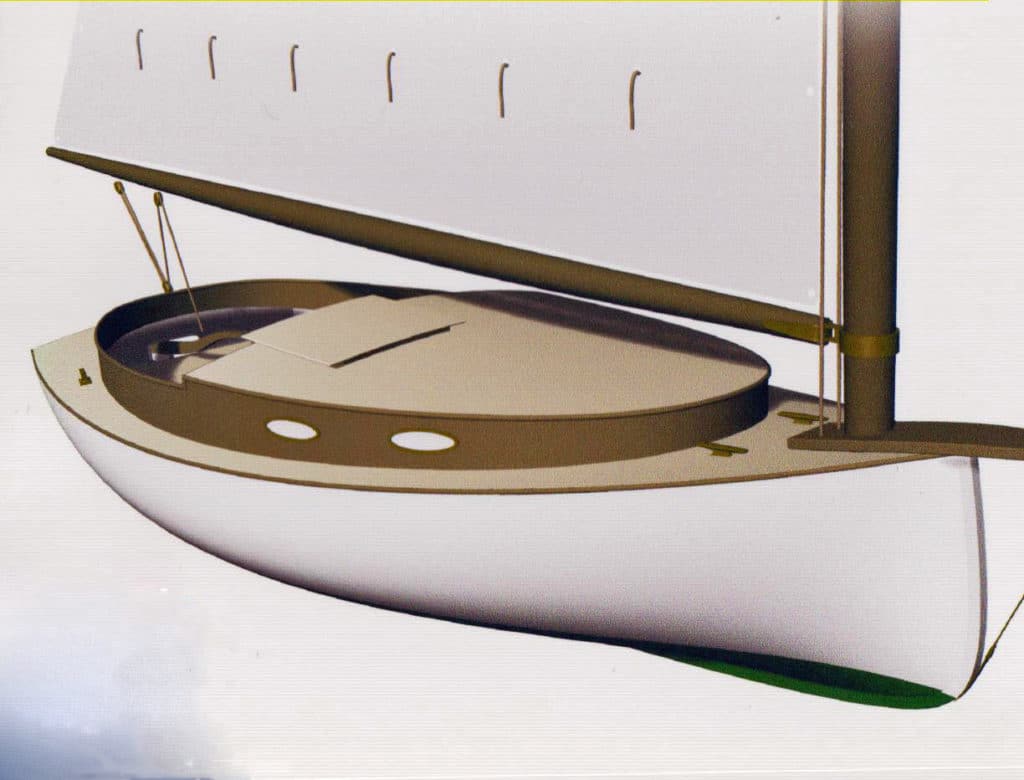
cat boat rendering 001_8648.jpg
Susan wrote in over this past weekend with some questions about this little beauty that she’s building currently:

Basically Susan wants this to be an all electric boat, totally traditional look with better than space shuttle technology utilized. Its going to be a cold-molded design and is actually a bit heavy for its size @4660 lbs. Just under 20 ft. LOD plus the bowsprit. Just over 9″ beam. The intended use parameters are critical for a concept like this. So, all near shore, basically to get the boat in and out of the harbor and to act as an auxiliary if the wind dies altogether but never intending to be more than about 5 miles away.
OK, will first of all I would advise that those parameters are subject to change as time marches on, so building in a bit of reserve capacity is prudent in my view.
Our friends at Mastervolt do a good job of helping out here. For a boat like this, The DriveMaster 5.0 kW matched up 14 kWh of battery capacity will meet Susan’s required electrical needs for 3-4 hours of sailing (Mastervolt recommendation). She can always add capacity by installing an additional battery if needed.
Another option that I personally think is a bit undesirable for this boat is the Sailmaster set-up, which basically is an electric motor with a saildrive. Trouble is, this will create the need for a motor box in the cockpit. This might not be a problem depending upon exact measurements and personal taste.
Susan came at us with an array of questions which are all good examples of things people need to ask as they contemplate an e-power set-up for a boat.
The list looks like this:
- AGM or lithium ION batteries? It depends on the specific AGM and LION. Calculate predicted cycle life and cost per cycle to see what might work.
- Ability to fast charge the batteries. Both AGM and LION have outrageous charge acceptance rates, so much thought need to be applied here to come up with a high output charging system that can meet the use / need environment i.e. charge time plugged in or on the mooring.
- The above plays heavily into decisions that will need to be made about wind generators, solar panels, perhaps running a portable generator to charge the batteries. To do this right, you really need to honestly look at “a day in the life” for the boat before you just start throwing thousands of dollars at it.
One final question Susan asked that few think to ask is an important one, plays into the day in the life issue. Do batteries need to be charged to full capacity each time they are discharged? Is it better to top them off if they are not depleted?
To answer that I’ll refer back to a very comprehensive article I wrote for Practical Sailor Magazine a few years back looking at LION batteries. One of the things I learned in my research for that piece was that a LION that is continually left at 100% stat or charge will actually loose cycle life quicker than on left a 80% state of charge for extended periods. So, the answer to that one I think is that if your are using the boat everyday, leaving it at full charge overnight is no big deal. For longer periods like a week away, the 80% value is a better bet.
Susan, sorry it took me a few days on this one, been a busy month! Ed







